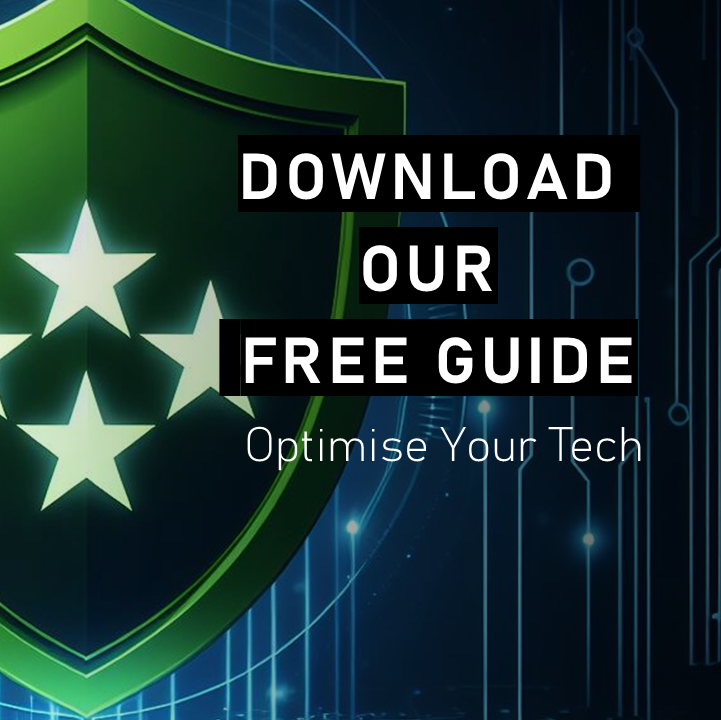Why What You Can’t See Can Hurt You
One of the biggest cybersecurity challenges businesses face today is visibility—or rather, the lack of it. It’s easy to assume that if you can’t see a problem, there isn’t one, but this is far from true. In fact, this false sense of security is exactly what makes businesses vulnerable. Let’s explore the importance of visibility using a familiar example: CCTV cameras.
The CCTV Analogy
Imagine you’ve installed CCTV cameras around your home or office. These cameras provide you with the ability to monitor what’s happening at any given time—whether you’re physically present or not. Without them, once you leave for the day or head off on holiday, you’re completely blind to what’s happening around your property.
Now, we’re not just talking about criminal activity. Perhaps your parcel is delivered while you’re away, or a neighbour drops off something important at your door. Without visibility, you simply have no idea what’s happening until you return. The absence of cameras creates a situation where you’re not only blind to potential security threats but also to everyday occurrences that might require your attention.
Translating This to Cybersecurity
The same principle applies in cybersecurity. Without the right tools and solutions to provide visibility into your network and systems, you have no idea what’s going on—good or bad. This makes your organisation highly vulnerable to a range of threats – both external and internal.
It’s not just about detecting obvious issues like malware or hacking attempts. It’s also about seeing the “everyday” activities within your IT environment—understanding who is accessing what, when, and how. Are employees following security protocols? Is sensitive data being accessed appropriately? If you can’t see these activities, you are creating ‘shadow IT’ where you have no way of managing or protecting anything effectively.
Everyday Examples of Why Visibility Matters
1. Email Phishing Attempts
Imagine your employees are receiving phishing emails. Without proper visibility into email security and network traffic, these malicious emails could be slipping through undetected. You won’t know whether anyone has clicked on a harmful link or if malware has been installed until it’s too late.
2. Unmonitored Devices
Let’s say an employee connects their personal device to your corporate network. Without tools to monitor this kind of activity, you won’t see the potential risk their device might introduce—whether it’s already compromised or lacks proper security configurations.
3. Data Access
If you don’t have visibility into who is accessing your sensitive data, you could easily miss when a disgruntled employee downloads large amounts of confidential information. By the time you realise, the damage is done.
4. Third-Party Access
Many businesses work with third-party vendors who need access to certain parts of their network or data. Without visibility into these interactions, you may not notice if a vendor’s access privileges are being misused or if their systems have been compromised, posing a risk to your business.
The Consequences of Poor Visibility
Lack of visibility increase technical debt and leaves your business wide open to a host of risks:
• Undetected Threats: If you can’t see abnormal behaviour or attacks happening in real-time, you won’t be able to respond quickly enough to minimise damage.
• Data Breaches: Without visibility, a data breach could go unnoticed for days, weeks, or even months, giving attackers ample time to steal sensitive information.
• Regulatory Non-Compliance: Many industries have strict compliance requirements regarding data protection and cybersecurity like NIS2 or GDPR. Without clear visibility into your systems, it’s nearly impossible to ensure you’re meeting these regulations and maintain high level of cybersecurity posture and hygiene.
Achieving Full Visibility in Cybersecurity
So, how can businesses achieve the visibility they need? This is where modern cybersecurity tools based on Zero Trust principles come into play. Technologies like Security Information and Event Management (SIEM) systems, endpoint detection and response (EDR) solutions, and managed SOCs (Security Operation Centres) using single identity offer real-time insights and reports into what’s happening across your network.
These modern tools organised and designed as seamless, centralised solutions, give you visibility into all corners of your digital infrastructure, allowing you to spot threats, monitor activity, and respond to issues before they escalate, reducing the number of support tickets but without the constant need of monitoring too many dashboards which can lead to false positives and alert fatigue.
The Visibility in Cybersecurity
Just as you wouldn’t feel comfortable leaving your home or office without CCTV monitoring, you shouldn’t allow your business to operate without full visibility into your cybersecurity landscape. Lack of visibility creates blind spots, and blind spots lead to vulnerabilities. By investing in the right tools and strategies, you can ensure your business remains secure, compliant, and ready to respond to both everyday occurrences and more serious threats.
Visibility isn’t a luxury in cybersecurity—it’s a necessity. So, take a moment to assess: do you really know what’s happening in your network right now? If the answer is no, it might be time to turn the lights on and take control.









